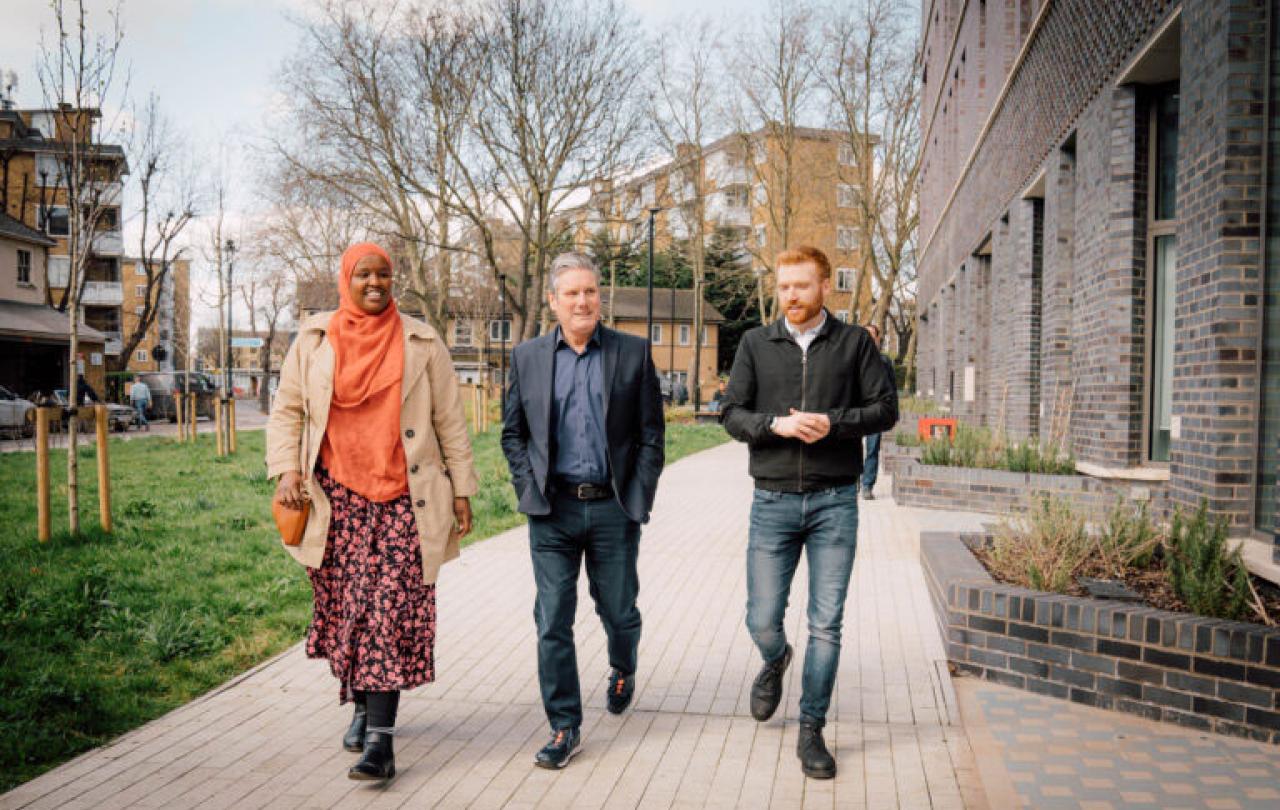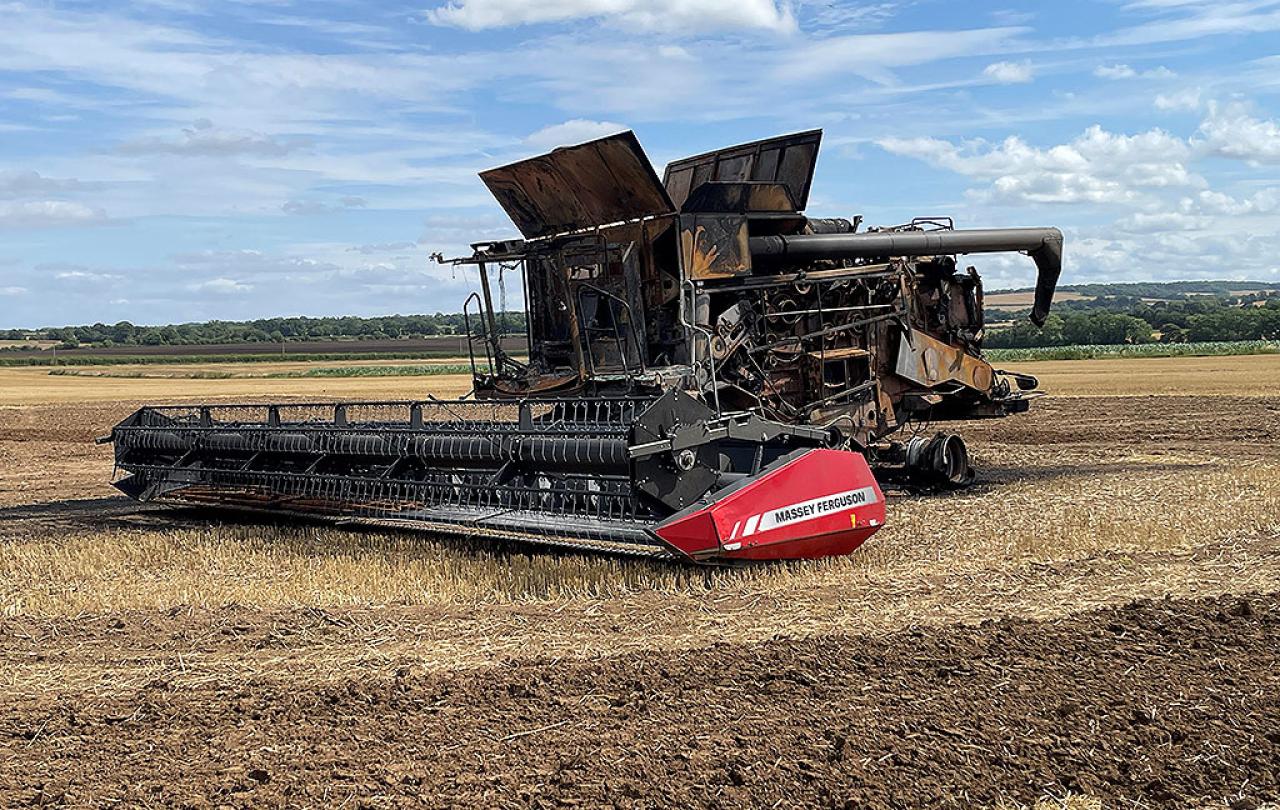
‘What good ever came out of Nazareth?’ was asked of Jesus. The same might now be said of Camden, which lies at the heart of the Holborn & St Pancras constituency. A safe Labour seat since the 1980s, its present incumbent is Sir Keir Starmer who has been handed the keys to Downing Street in the General Election.
His wallet apparently has on it ‘Take me home to Kentish Town’. Two buses link Kentish Town, where he lives, with Whitehall – a route of about four miles. He will go into government with a very full in-tray, and many of them are issues he knows first-hand from his own constituency. I know them too, having lived there for 20 years.
Sometimes I cover services for a clergy colleague in the nearby parish of St Mary’s, Somers Town. The church is on Eversholt Street which runs along the eastern side of Euston station, incidentally the capital’s first mainline railway terminus. Last year, as I arrived for a mass one rainy Saturday morning, a random group of people sheltered in the doorway. They were, I discovered, addicts waiting for a drugs drop. Towards the end of mass, one of the group – a young woman – came into the back of church and found a pew in which to start preparing her fix. Once I had disrobed, I asked if she wouldn’t mind doing it somewhere else.
Another time, in the same church, a young woman from Spain was asking for money. She had answered a job advert on social media to come and work on a chicken farm. Having arrived and paid her accommodation for a week, she found there was no chicken farm, and trying to find other work was almost impossible because of paperwork. What could we do to help? The church itself is in dire need of financial support too.
St Mary’s Flats... were among the first examples of public housing in the country to have electricity and Jellicoe became something of a social housing celebrity.
Somers Town was transformed 100 years ago when its energetic parish priest, Fr Basil Jellicoe, created the first housing association. Dismayed by the squalor of Victorian tenements, he set about raising funds for The St Pancras House Improvement Society. Jellicoe was only in his mid-20s but had a solid Anglo-Catholic background founded on mission and a heart for the poor. The cramped and filthy conditions with extreme poverty were ‘an outward and visible sign of an inward and spiritual disgrace’ – for him, the opposite to the sacraments.
By the time Jellicoe moved from the parish in 1934, the slums had been cleared and a number of the new blocks built, the first being St Mary’s Flats, with others given saints’ names. They were among the first examples of public housing in the country to have electricity and Jellicoe became something of a social housing celebrity. Tragically, having worn himself out he died at the age of 36. His legacy is one of praxis – active Christianity meeting social problems where they are – and his model became the blueprint for many other housing associations since.
No surprise, therefore, that families struggle to afford to live in the area and migrate further out. As a result, schools have started to close.
The area remains a swirl of social problems in addition to the drugs. Mental health issues are rife. There are plans to redevelop St Pancras Hospital which houses mental health services. The area suffers from traffic and noise pollution, and lacks communal spaces. Camden Council recently saw fit take one corner of a public green in Somers Town on which to build a tower block of multi-million pound flats, handy for nearby St Pancras Station. Crime rates are high with muggings and mobile phone thefts a daily reality. Last year, as mourners left a funeral one Saturday afternoon at St Aloysius Church just a few streets down from St Mary’s, a drive-by-shooting injured six people. Starmer called the incident ‘appalling’ and spoke of ‘extra patrols and community support’ after a conversation with police.
The area has become highly expensive. Local businesses are being priced out by increased rents. Very little social housing has been built this century. The average house price in NW1, which encompasses the Nash terraces of Regents Park, the council blocks and social housing of Somers Town, is £1.3 million. A two-bed flat is in excess of half a million quid. No surprise, therefore, that families struggle to afford to live in the area and migrate further out. As a result, schools have started to close – four in as many years recently. In his acceptance speech in Camden Council’s offices near St Pancras station, close to the world-renowned Crick Institute and Facebook’s UK headquarters, Starmer namechecked the mythical ‘girl from Somers Town’ and his hope for her future.
Charles Dickens went to school around here and knew these streets well. His 1848 novel Dombey & Son detailed the destruction and chaos caused in the area by the building of the railway line through it. 175 years later, it has been HS2, the great White Elephant which has dug up streets, seen whole blocks of accommodation and hotels demolished, diverted roads, and axed much-loved institutions like the Bree Louise pub. There has been no benefit to locals so far (quite the opposite, in fact) and it is a stain on both Labour and Conservative administrations. Sir Keir says he is furious at the ‘big hole’ left by the down-tools project. There is fear now that the redundant land will be subject to a ‘gold rush’ as developers circle to pick up some prime real estate.
Interviewed in June by the Camden New Journal, Starmer said: ‘The government has earmarked money for Euston. I want to see that money and obviously, if we come into power, we’ll see through all this money – and not stripped away from other projects which is the usual trick.’ He also said: ‘The other thing is we need housing. Camden desperately needs housing as many places do. So we will use it – if we are privileged to come into power – as part of our plan for 1.5 million homes.’
His manifesto has five pledges:
- Kickstart economic growth
The cost-of-living crisis is biting hard here and the inequalities are stark. People need real money.
- Make Britain a clean energy superpower
It’s going to need more than a few on-street charging points for electric vehicles. And the carbon footprint of that HS2 project?
- Take back our streets
He wants to halve crime rates but London has around 106 crimes per 1,000 people and his own constituency feels less safe than it used to.
- Break down barriers to opportunity
Camden already ranks highly in the deprivation index where barriers are concerned: schools, homes, jobs…
- Build an NHS fit for the future
Again, the hospitals and GP services are cracking – high demand combined with under-investment is deadly.
A prophet is not welcome in his own country, it was said. Although the new Prime Minister was elected with a majority in his home seat, it was down to 18,884 votes from the 2019 endorsement of 36,641 votes – a drop of almost 50%. In this election, an Independent candidate called Andrew Feinstein polled 7,312 votes with his pledge to improve life for local residents. Starmer’s constituents will be counting on him to fix the nation along with the problems on their own streets. Otherwise, safe seat or not, he may no longer be welcome in Camden either.

